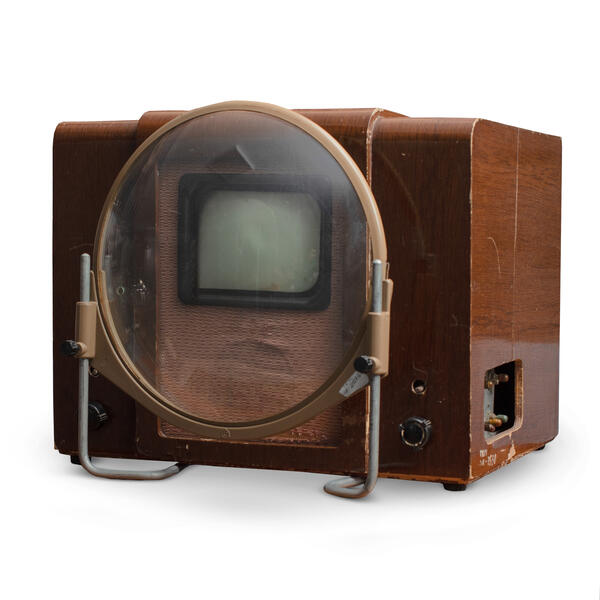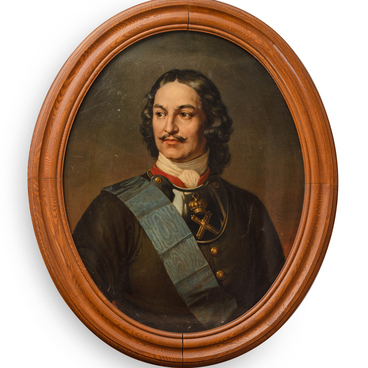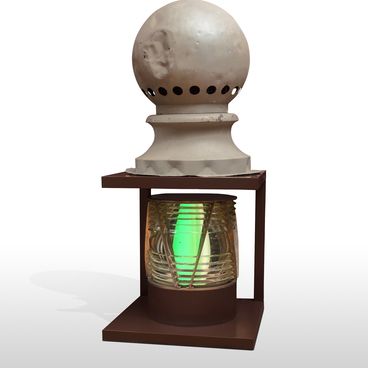In the 1950s, TV sets began to appear in Soviet apartments. Soon, they became an essential element of any living space. One of the first mass-produced Soviet TV sets was the KVN-49. It was designed by the Television Research Institute in Leningrad in 1947. The following year, the first batch of twenty TV sets was manufactured at a pilot plant. After successful testing, the model was accepted for mass production.
The brand name KVN was formed from the first letters of the family names of the designers — Vladimir Konstantinovich Kenigson, Natan Mendelevich Varshavsky, and Igor Alexandrovich Nikolaevsky. The number 49 stands for the year (1949) when the mass production of the model was launched. The TV set from the museum collection was manufactured by the Alexandrov Radio Manufacturing Plant in 1958.
The KVN-49 black-and-white TV set was equipped with a picture tube. The screen on the front side was quite small, only slightly larger than a postcard — 105 by 140 mm. The set came with a large magnifying lens that was placed in front of the miniature screen on metal legs.
One part of the lens was flat, and the other was spherical. According to the idea of the inventors, the lens was supposed to be filled with glycerin. Sometimes, distilled water was used instead. Thanks to the lens, the image appeared approximately four times larger, making it more convenient to watch TV.
The KVN-49 enjoyed great popularity among the country’s population and could be rightfully called the national TV set of the Soviet Union. The first sets of this model were sold at the price of 1,200 rubles as determined by the government. An improved design made it possible to reduce the price to 900 rubles. Taking into account that in the 1950s, a top-class Soviet engineer earned around 600 rubles per month, buying a TV set was a significant burden on the family budget.
Since not all citizens could afford a television set, several families would often gather in one apartment to watch TV together. The device was designed to connect to three channels. According to experts, approximately 1.3 million sets of this model had been produced by 1962.


